A poorly-prepared kit can put an enormous damper on your backcountry adventure. Pack with convenience, efficiency, and comfort in mind, collecting your supplies accordingly. This list of backpacking basics will get you started on the path toward a well-prepared backpack camping excursion.
1. Swiss army knife
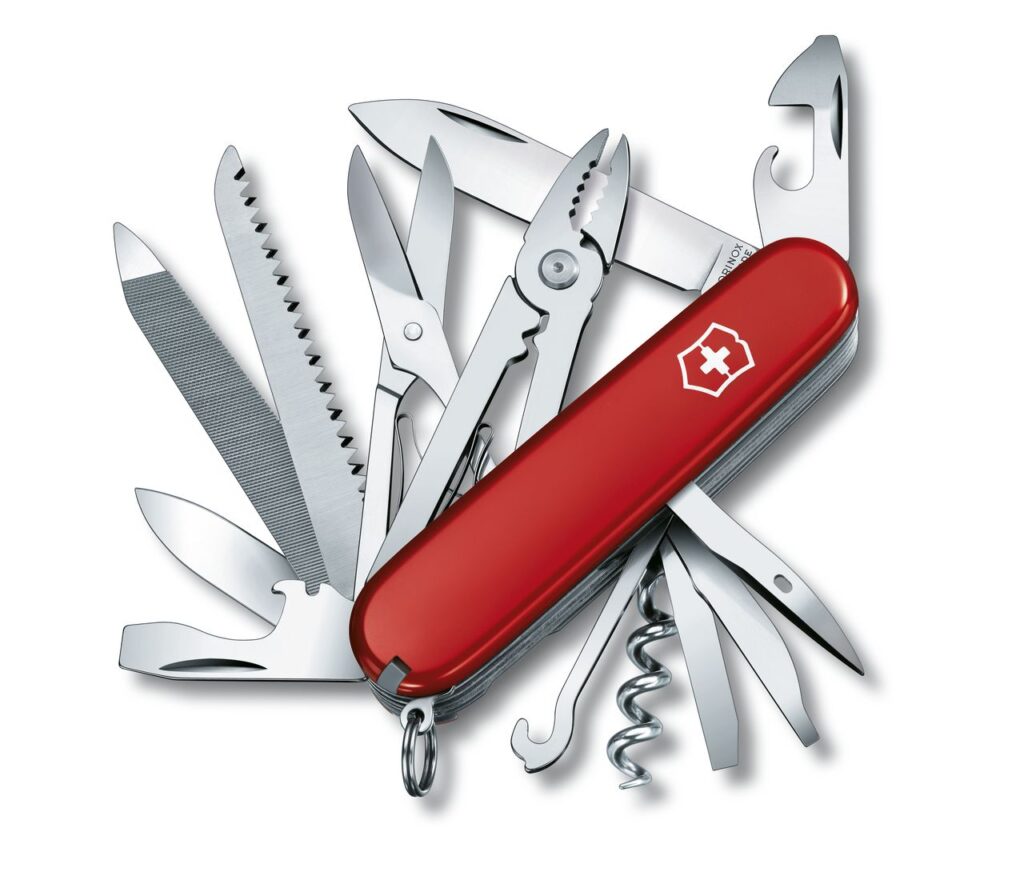
img source: victorinox.com
A Swiss Army knife is more than a blade with a handle. It’s engineered with multiple blades and tools in one compact, convenient package. Options for tools in a standard Swiss Army knife include scissors, saw blades, screwdrivers, can openers, bottle openers, wire strippers, a combination of punch and sewing awls, and tweezers. This is by no means a comprehensive list, so you’ll want to keep these infinite combinations in mind when you purchase a Swiss Army Knife. Explore all tool options that will be particularly useful when you’re backpacking through the backcountry.
If you are still new to the world of backpacking then here’s a backpacking guide for beginners from travoo.com that you can follow to help you on your next adventure.
Thanks to their wide popularity, it’s easy to find a Swiss Army Knife at most outdoor retailers. That said, it’s best to work with a reputable outfitter like Self Reliance Outfitters so can rest assured knowing that you’re purchasing a genuine product backed by a reliable warranty.
2. Backpack

img source: shopify.com
Choosing the right backpack is one of the most important decisions you’ll make before embarking on your backpacking adventure. It’s also a vital step in completing your kit for outdoor exploration. You want to be highly selective during the shopping process.
You’ll want to handpick a backpack that’s neither too large nor too small and will hold everything you need while still staying lightweight and balanced. When you’re exploring the backcountry, you won’t want to lug around a heavy backpack that causes back discomfort or soreness.
There are three main factors to consider here: capacity, features, and fit. The capacity should correspond with the time you’ll spend out in the backcountry. Your backpack should also accommodate the amount of bulk and weight you’re willing to haul on your journey.
Features are those refinements that impact how the backpack works for you. The fit has less to do with your height than it does the length of your torso. A pack’s most important feature is a proper fit. A poorly-fitting backpack won’t only strain the neck, back, and shoulders but will fail to distribute the weight of your backpacks’ contents evenly during your trek through the backcountry.
3. Ultralight sleeping bag
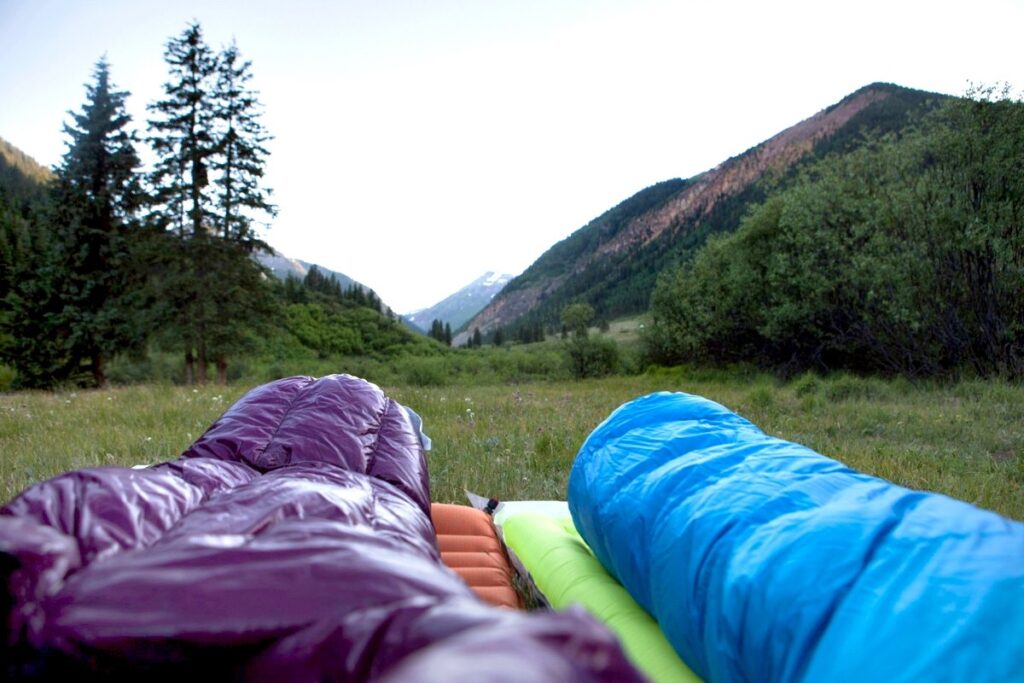
img source: stackpathdns.com
Choose a sleeping bag that’s only as warm as is necessary for the season and the area in which you are camping. Consider water-resistant down sleeping bags. These models have the best ratio of warmth to weight and don’t present the problem of wet feathers during long rainy periods. These sleeping bags can last up to a decade without losing their warmth if well-cared for.
4. Sleeping pad
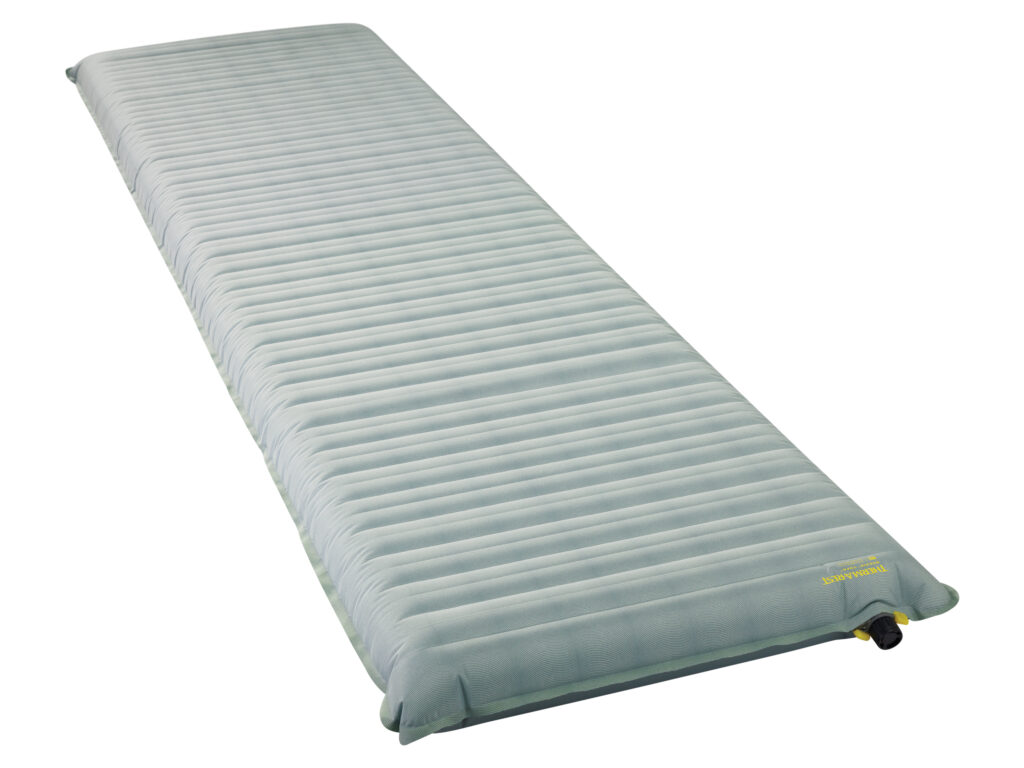
img source: thermarest.com
There are two main choices available for sleeping pads: inflatable foam-filled pads and basic foam pads. Inflatable foam-filled pads are the most comfortable to sleep on and are also the most compact. Despite these benefits, a foam-filled sleeping pad can be expensive and will require time for inflation and deflation.
The alternative, a basic foam pad, is inexpensive, lightweight, and virtually indestructible. Comfort and cost should be the main deciding factors in regards to sleeping pads for your backpacking trip.
5. Backpacking tent
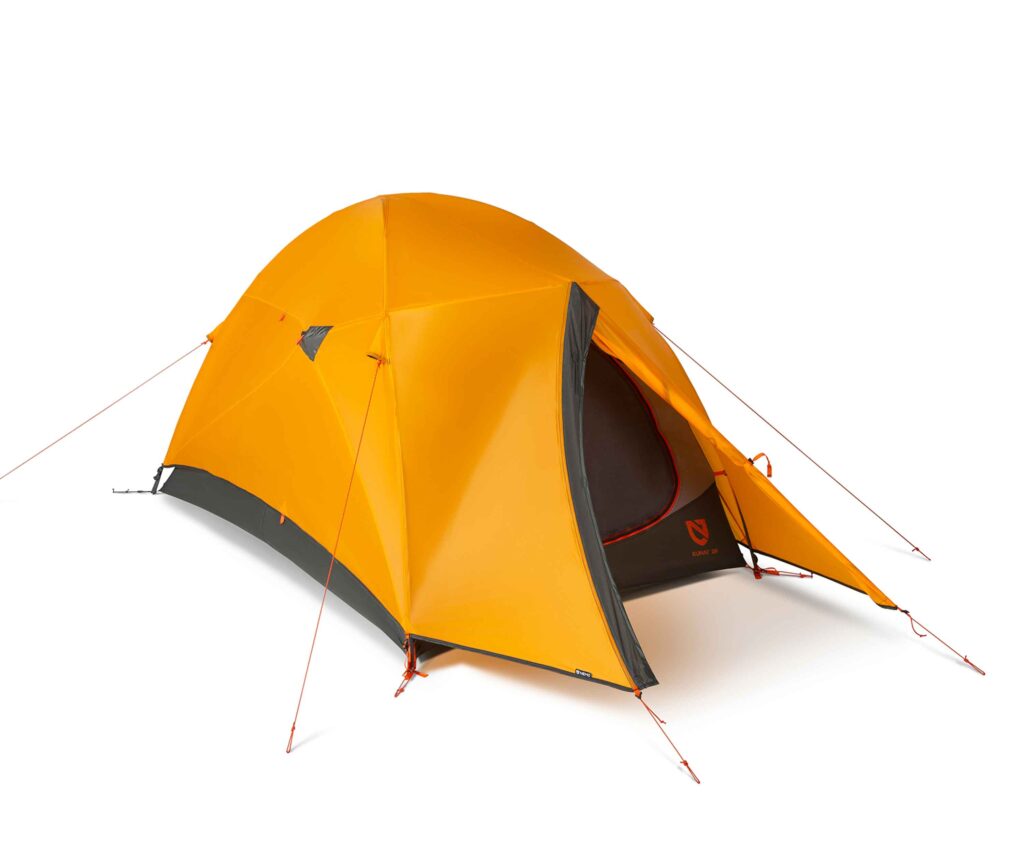
img source: nemoequipment.com
Generally, a lightweight tent that is rated for three seasons will suit your needs nicely. A modern two-person backpacking tent generally weighs five pounds or less. Generally speaking, the lighter the tent, the less roomy it is. A rainfly is an important feature for keeping you dry during unexpected storms. To secure, a backpacking tent should extend to the ground on each side.
6. Cooking supplies
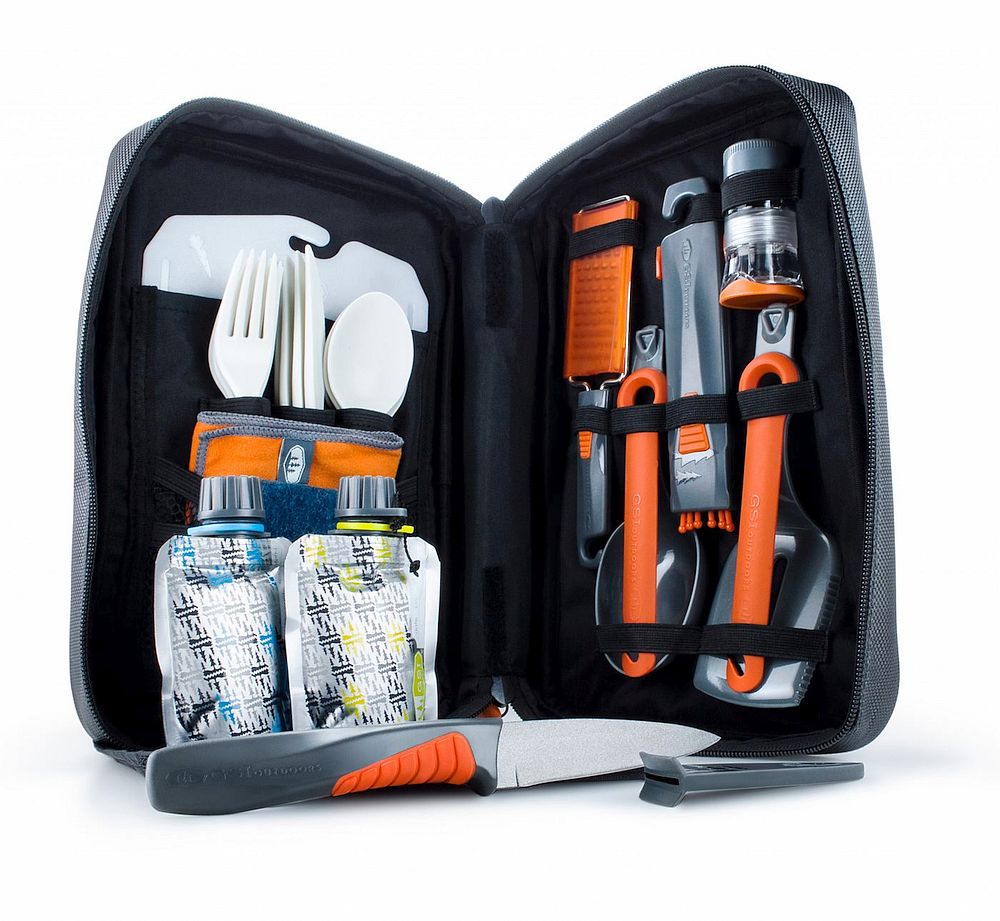
img source: expocafeperu.com
Three types of stoves exist for all your backpacking needs, so you can cook a hot meal while out on the trail. Canister stoves operate on a pressurized blend of butane and propane. You only have to attach the burner to the fuel canister and turn the knob before lighting. These stoves are safe, simple, and boast an adjustable flame.
Long-distance hikers tend to prefer alcohol stoves. These are compact and relatively lightweight. The fuel is more readily available than it is in a canister but burns less hot. Running on white gas, liquid fuel stoves aren’t quite as safe but are inexpensive and burn hot for quick food preparation.
A black pot of 2 to 3 quarts in size will generally suffice for cooking in the backcountry. Consider a windscreen for breezy conditions. For a plate, choose one with upturned edges that can also serve as a broad bowl. Basic silverware and an insulated mug round out the necessities.
7. Freeze-dried meals

img source: shopify.com
Modern campers can indulge in a wide variety of freeze-dried meals to take on or off the trails. Meals to suit the pickiest eater or more gourmet tastes await you in your camping experience. Many free-dried meals contain enough food for two servings, so you can share with a hiking companion or save some for the next meal if you’re backpacking solo.
8. Water filter, purifier, or water bottles

img source: thefoodellers.com
Water filters work by catching and straining out protozoan cysts and bacteria. These biological pathogens form the main water concerns in the U.S. and Canada. Water purifiers go one step further, by combating viruses.
These viruses are too small for most filters to catch effectively. In less developed areas of the world, consider using a purifier. Another option is to simply carry bottled water. This option packs on extra weight and forces you to carry your waste plastic with you until you reach a recycling receptacle.
9. Navigation

img source: lerablog.org
An essential part of preparing to head out into the wilderness is being able to find your way to your destination and back again. These supplies ensure that this is possible. A good compass and map are vital, in the case that technological devices fail.
When you carry a satellite phone with GPS, you’ll be able to communicate with the outside world if your cell phone loses reception. If you’re traveling solo, you can also remain in contact with loved ones or authorities if something goes wrong.
10. Sunscreen

img source: classpass.com
Sunburns are among the most common of traveling injuries. Sunscreen is a must to prevent this pesky, potentially dangerous injury from occurring. Apply it even on cloudy days when the sun is obstructed. Unfortunately, mist and clouds do not block enough of the sun’s rays to protect you from burns. The AAD recommends that you apply a sunscreen of at least 30 SPF.
11. Clothing for the elements
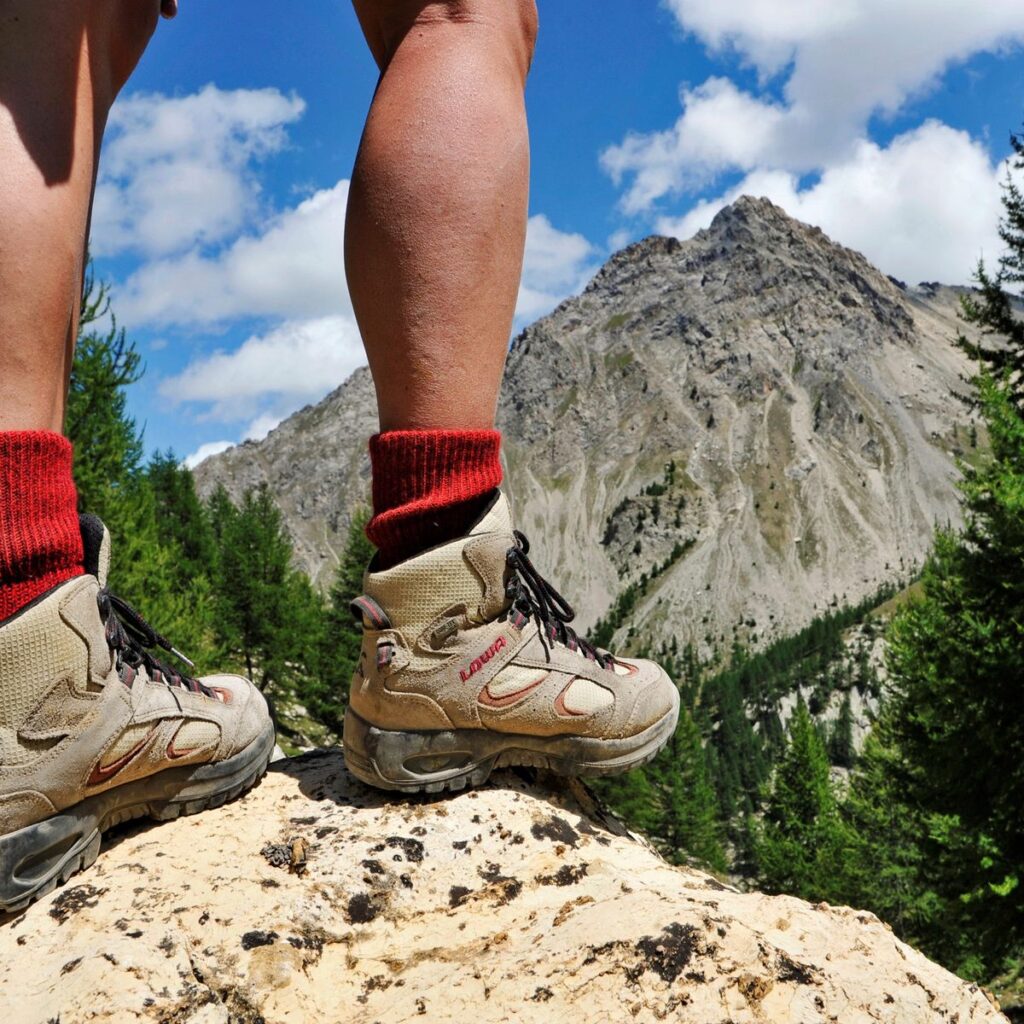
img source: nymag.com
Layering is a key element of dressing and packing for unexpected weather. From top to bottom, consider good hiking boots, socks, long underwear, synthetic hiking shorts or pants, synthetic shirt, hoodie or fleece, light jacket, waterproof jacket and pants, a beanie, and light gloves. Pack a minimum of one pair of socks per day. You should also pack lightweight sandals for campsite use.
12. Lighting

img source: unsplash.com
A headlamp can be an ideal solution for moving around the camp at night. It keeps your hands free while illuminating the area before you. Whether you’re just moving from the campfire site to your tent or are fetching something from further away, a headlamp is a small, lightweight device that will help keep you safe and secure from concealed dangers or bumpy terrain.
Conclusion
Having these items at your disposal will help you prepare you for every unexpected twist and turn in the backcountry. With these tools, and certain tidbits of hiking knowledge such as keeping your feet dry, staying hydrated, protecting yourself from the sun, you can enjoy a safe and successful adventure. Pack with care and enjoy your time in the great outdoors.

























